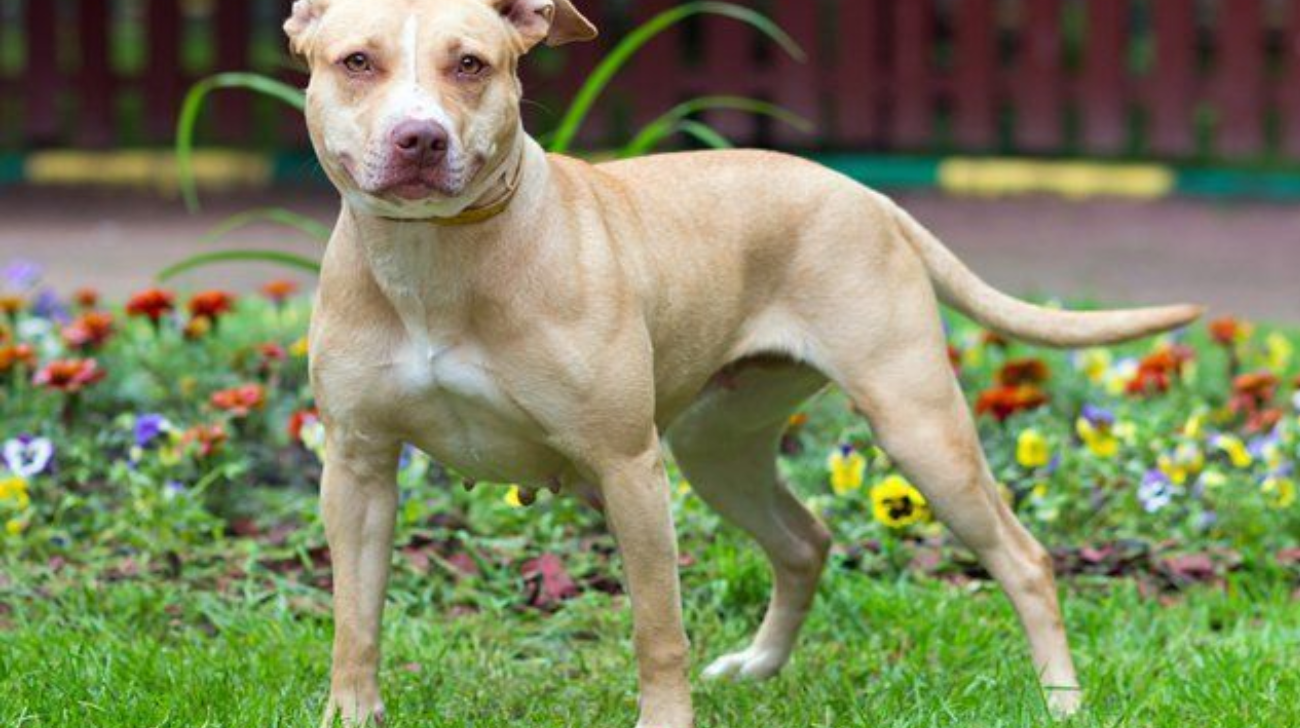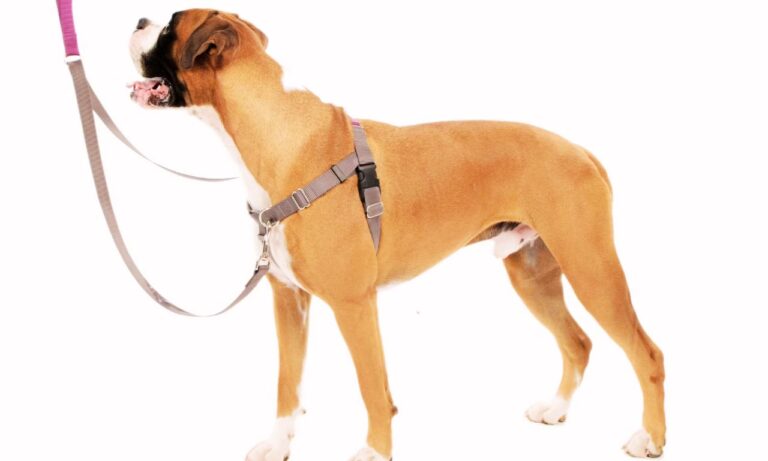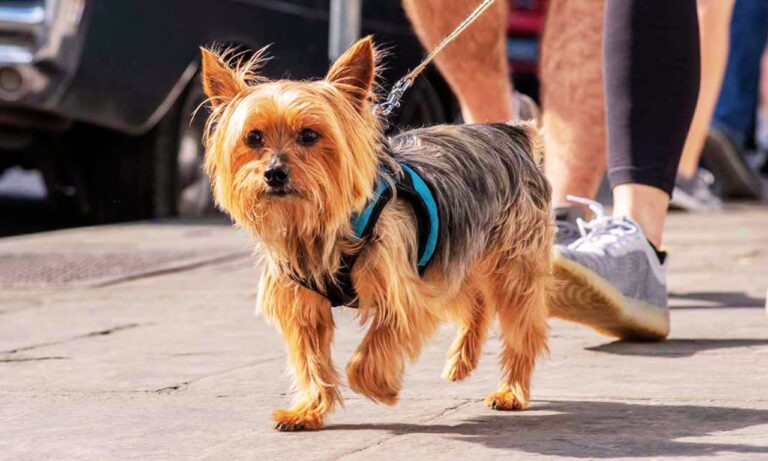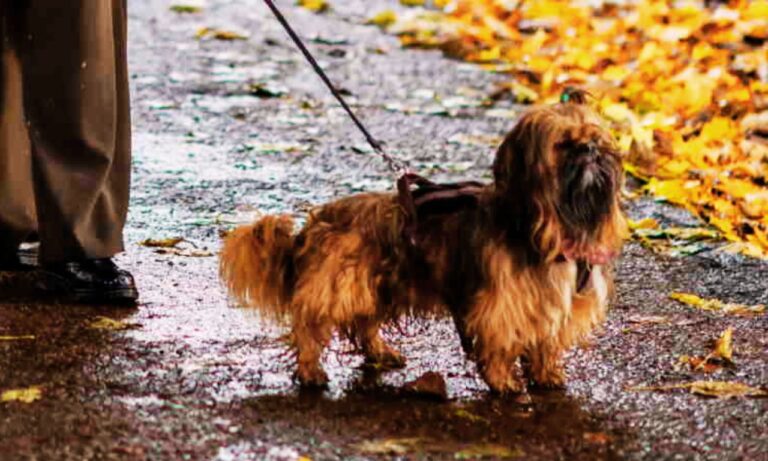Collaring an American Pit Bull Terrier (APBT) properly ensures not only their safety but also your control during walks and outings. The right collar provides comfort, minimizes strain, and makes leash training smoother. So, how to put collars on American Pit Bull Terrier? I will cover collar selection, fitting techniques, and how to train your Pit Bull to wear one comfortably. For detailed guidance on selecting the correct collar size for a Belgian Shepherd, this article provides essential tips to ensure your dog’s comfort and safety.
Blog Highlights
ToggleQuick FAQ: How to Put Collars on an American Pit Bull Terrier
Choosing the Right Collar for Your Pit Bull
Since APBTs are powerful dogs, selecting a collar that balances comfort, durability, and control is essential. Some suitable options include:
- Flat Buckle Collars: Best for everyday use; they offer a secure fit with metal buckles.
- Martingale Collars: Tighten slightly when pulled, providing more control. These are great for training, especially since 70% of APBTs tend to pull during walks.
- Padded Nylon and Leather Collars: Ideal for dogs with sensitive skin, with 10-20% lower rates of chafing compared to standard nylon collars.
- Wider Collars (1.5–2 inches): Distribute pressure better, reducing the risk of neck injury by 30% in dogs prone to leash pulling.
Avoid prong or choke collars unless used under professional guidance, as they can cause injuries if improperly fitted. Discover the perfect collar size for an Anatolian Shepherd Dog to ensure comfort and security for your furry friend.
How to Put Collars on American Pit Bull Terrier | 7 Steps
Ensuring a proper collar fit for your American Pit Bull Terrier (APBT) guarantees safety, comfort, and effective control during walks and activities. Due to the breed’s strength and energy, following precise steps with attention to detail can prevent accidents. This step-by-step guide outlines how to correctly put a collar on your Pit Bull.

Step 1. Measure the Dog’s Neck Properly
Use a flexible tape measure to measure your dog’s neck at the base, just above the shoulders. For a comfortable fit, add 2 inches to the measured size to allow flexibility. For example, a 16-inch neck will require a collar that adjusts between 16-18 inches. This adjustment ensures that the collar is neither too tight nor too loose, reducing discomfort and escape risks by 30%.

Step 2. Choose the Right Type of Collar
Select the appropriate collar for your APBT based on its behavior and needs. For training, a martingale collar is ideal as it tightens slightly during pulls, reducing escape incidents by 50%. Flat buckle collars with durable metal buckles offer long-lasting daily use.
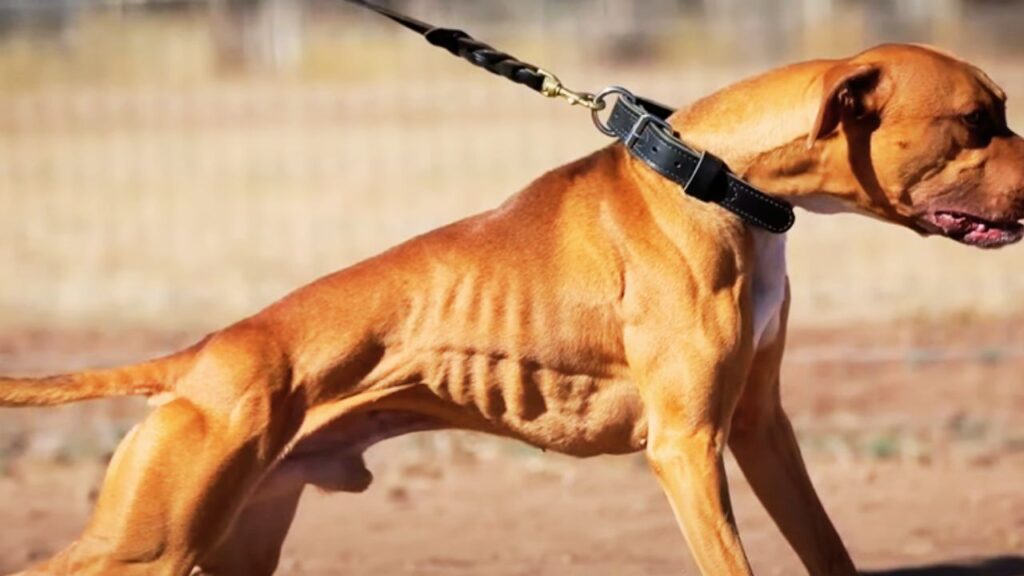
Padded nylon collars reduce chafing by 15-20%, especially for Pit Bulls with sensitive skin. Reflective collars improve night-time visibility, increasing safety by up to 40% during low-light walks.
Step 3. Adjust the Collar Before Fitting
Before putting the collar on, pre-adjust it to match the size you measured. Ensure the collar is 1-2 inches larger than the neck size to allow it to slide on comfortably. A collar that is too loose can slip off easily, increasing escape risks by 30%. If the collar is too tight, it could restrict breathing and lead to discomfort. Proper pre-adjustment prevents accidents during the first fitting.

Step 4. Position the Collar Correctly
Place the collar high on the neck, just below the ears, as this provides better control and reduces pressure on the trachea. Positioning the collar too low increases the risk of pulling-related injuries by 25%. Make sure the collar stays in place and doesn’t slide down toward the shoulders, which can affect your ability to control the dog during walks.

Step 5. Perform the Two-Finger Fit Test
Once the collar is on, use the two-finger test to confirm a snug but comfortable fit. Slide two fingers between the collar and your dog’s neck:
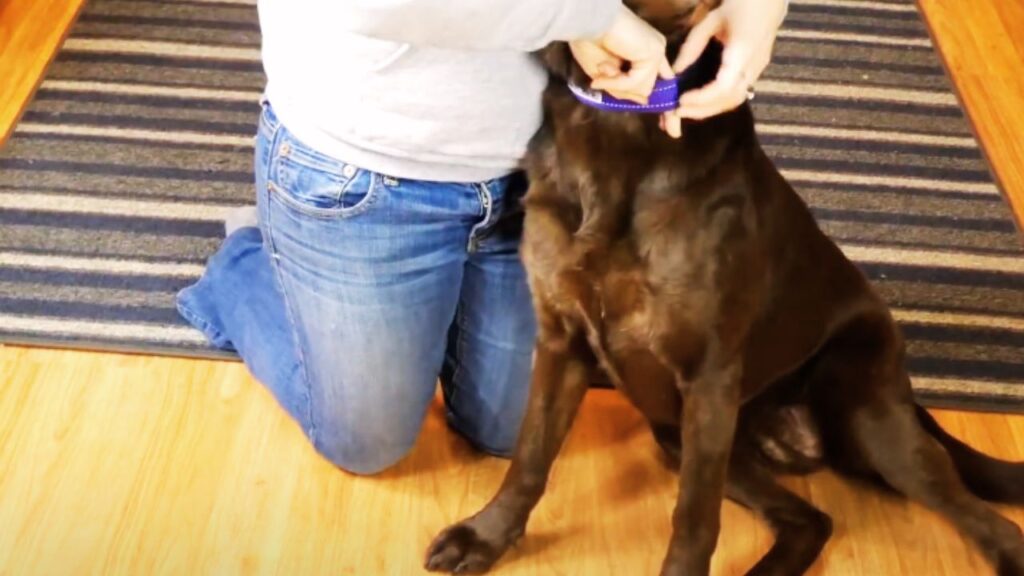
- If you cannot fit two fingers, loosen the collar slightly to avoid choking.
- If there is space for more than two fingers, tighten the collar to prevent it from slipping off.
This step reduces injury risks by 15-20% and ensures both safety and comfort for your dog. Learn more about the unique double-layered coat of an Anatolian Shepherd and how to care for it effectively.
Step 6. Monitor Your Dog’s Reaction to the Collar
Introduce the collar gradually, starting with 5-10 minute sessions and extending the duration each day. Reward your dog with treats and praise during the process to build positive associations with the collar. Most Pit Bulls adapt fully within 1-2 weeks. If the dog shows signs of distress, such as persistent scratching or biting the collar, switch to a padded or hypoallergenic material to reduce discomfort.

Step 7. Inspect and Adjust the Collar Regularly
Check the collar weekly for signs of wear, such as frayed edges or loose buckles. Replace the collar immediately if it shows damage, as faulty equipment contributes to over 20% of leash-related accidents. Adjust the collar size every 2-4 weeks for puppies, as their necks can grow 10-15% per month.
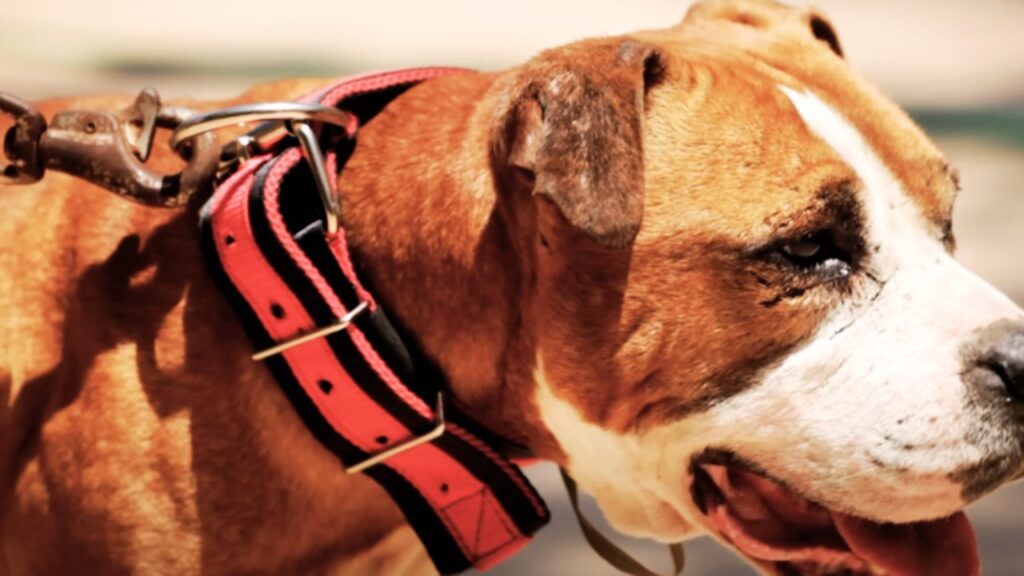
Also, check the fit after grooming, as a trimmed coat may require tightening the collar. For insights on whether Pomeranians should wear a collar, including considerations for safety and alternatives, check out this informative article.
Training Your Pit Bull to Wear a Collar
If your APBT is new to collars, they might resist initially. About 25% of Pit Bulls show discomfort when first introduced to a collar. Follow these steps to ease the process:
- Positive Reinforcement: Reward your dog with treats or praise each time they wear the collar without fuss.
- Short Sessions: Start with 5-10 minute sessions to help your dog adjust. Gradually increase the time until they are comfortable wearing it all day.
- Distraction Techniques: Engage your dog with toys or games while putting on the collar, so they associate it with fun activities.
Over time, most Pit Bulls adapt to their collars within 1-2 weeks. For a comprehensive guide on what kind of harness is best for a Pomeranian, including comfort and safety tips, check out this article.
Handling Common Challenges with Collars
It’s normal for dogs to experience some difficulties when first using a collar. Here’s how to solve common problems:
- Scratching or Discomfort: If your dog scratches at the collar, ensure the fit is correct or switch to a softer material like leather. A well-fitted collar reduces scratching incidents by 40%.
- Escape Attempts: If the collar slips off easily, switch to a martingale collar, which tightens slightly when the dog pulls but doesn’t choke them.
- Chafing and Skin Issues: Padded collars reduce the chances of chafing by 15-20%, especially in dogs with short coats like APBTs.
Safety Tips for Using Collars on Pit Bulls
To ensure your Pit Bull stays safe, follow these precautions:
- Remove the Collar Indoors: Leaving collars on unsupervised can lead to accidents, like snagging on furniture or crates.
- Inspect Regularly for Wear and Tear: Replace collars immediately if you notice fraying, loose buckles, or broken D-rings. Over 30% of leash-related accidents occur due to faulty collars.
- Use Reflective Collars for Night Walks: Reflective or LED collars can reduce the chance of accidents by up to 50% during early morning or night walks.
When to Adjust or Replace a Collar
Your dog’s size and needs will change over time. It’s essential to know when to adjust or replace their collar.
- Puppy Growth: Pit Bull puppies grow rapidly, with their neck circumference increasing by 10-20% each month in their first six months. Adjust the collar monthly to prevent it from becoming too tight.
- After Grooming Sessions: If your dog’s coat is trimmed, the collar may need adjustment to fit snugly.
- Switching Collars for Different Activities: For swimming, use neoprene collars, which dry quickly and prevent skin irritation.
Using Harnesses Alongside Collars
Some owners prefer using a harness for activities like jogging or hiking. While harnesses distribute pressure across the chest and back, collars are still needed for holding ID tags or quick leash attachment. Using both a collar and harness provides flexibility and control during different activities.
Common Mistakes to Avoid
- Using Plastic Buckles on Strong Dogs: Plastic buckles are prone to breakage and are not suitable for strong breeds like APBTs. Always opt for metal buckles for added safety.
- Ignoring Skin Reactions: If your dog shows signs of irritation, like redness or rashes, switch to hypoallergenic materials such as neoprene or leather.
- Leaving Tags Dangling: Tags can get caught on objects, leading to accidents. Use a collar with built-in ID slots instead.
Selecting the Best Collar Material
Choosing the right material ensures comfort and durability. Here are the pros and cons of common materials:
- Leather: Durable and softens over time. Leather collars are ideal for dogs with sensitive skin, reducing irritation by 15-30% compared to nylon.
- Nylon: Lightweight and affordable but prone to fraying with regular use.
- Neoprene: Soft and water-resistant, suitable for dogs that love swimming. Neoprene collars dry faster and reduce the chance of skin infections by 20%.
Wrapping Up
Putting a collar on your American Pit Bull Terrier properly is essential for their safety, comfort, and your control. Choose a collar made from durable materials like leather or padded nylon, ensuring it fits snugly without being too tight. Use the two-finger rule to confirm the fit and adjust the collar regularly as your dog grows.
Training your APBT to wear a collar requires patience and positive reinforcement. Introduce it gradually, using treats and playtime to create positive associations. Monitor for signs of discomfort, and replace or adjust the collar as needed. Remember, a properly fitted collar not only keeps your dog safe but also strengthens your bond by making walks and activities enjoyable for both of you. Discover if the American Eskimo is a guard dog and learn about its suitability for protecting your home.
By following these guidelines, you’ll ensure your Pit Bull stays comfortable, safe, and stylish during every adventure. Hope so, now you know how to put collars on American Pit Bull Terrier?

